Weed or Wildflower? Spring Weeds that Look Like Native Plants
Killing native wildflowers by mistaking them for weeds can be detrimental to the ecosystem. Here are six common spring weeds and how to tell them apart from similar native plants.
Some of those "weeds" you see popping up in the summer landscape might not be undesirables but native wildflowers trying to gain a foothold.
Like weeds, some native plants spread on their own by seed, offering free plants that can benefit the birds, butterflies, bees, and other pollinators that so many gardeners are trying to attract to their yards these days.
The trick is knowing which is which.
Especially when plants are young, desired native wildflowers are easy to mistake for unwanted weeds.
Weeds and desirable plants are often confused because their flowers – at first glance – look similar. However, a closer look at the leaves, growth habit, and even the flowers themselves almost always unveil a few key traits that set them apart.
A weed flower, for example, may have a slightly different shape than a look-alike wildflower, or it may have a different number of petals, or the flowers may be arranged differently on the stems.
The plant’s leaves are often even more distinctive. One plant may have larger, wider leaves while the other may have narrower or even needle-like foliage. Or one plant might have leaves coming out opposite one another on the stems while the other has leaves alternating up the stems.
Other determining clues include the plant’s growth habit, where the plant is growing, and distinctive coloring on the stems or leaves.
Numerous phone apps are available to help identify snapshots of plants in question (Seek by iNaturalist, PlantSnap, NatureID, LeafSnap, and PictureThis, to name a few).
Several online weed-identification websites also give pictures and descriptions of common weeds, such as Preen’s weed-identification pages and sites run by Cornell and Rutgers universities.
Numerous books and weed field guides can help sort out ways to identify weeds by key features, and the U.S. Department of Agriculture’s National Invasive Species Information Center website lists many other weed-identification and native-plant resources.
Here are five of the most common summer weeds and how to tell them apart from similar native plants:
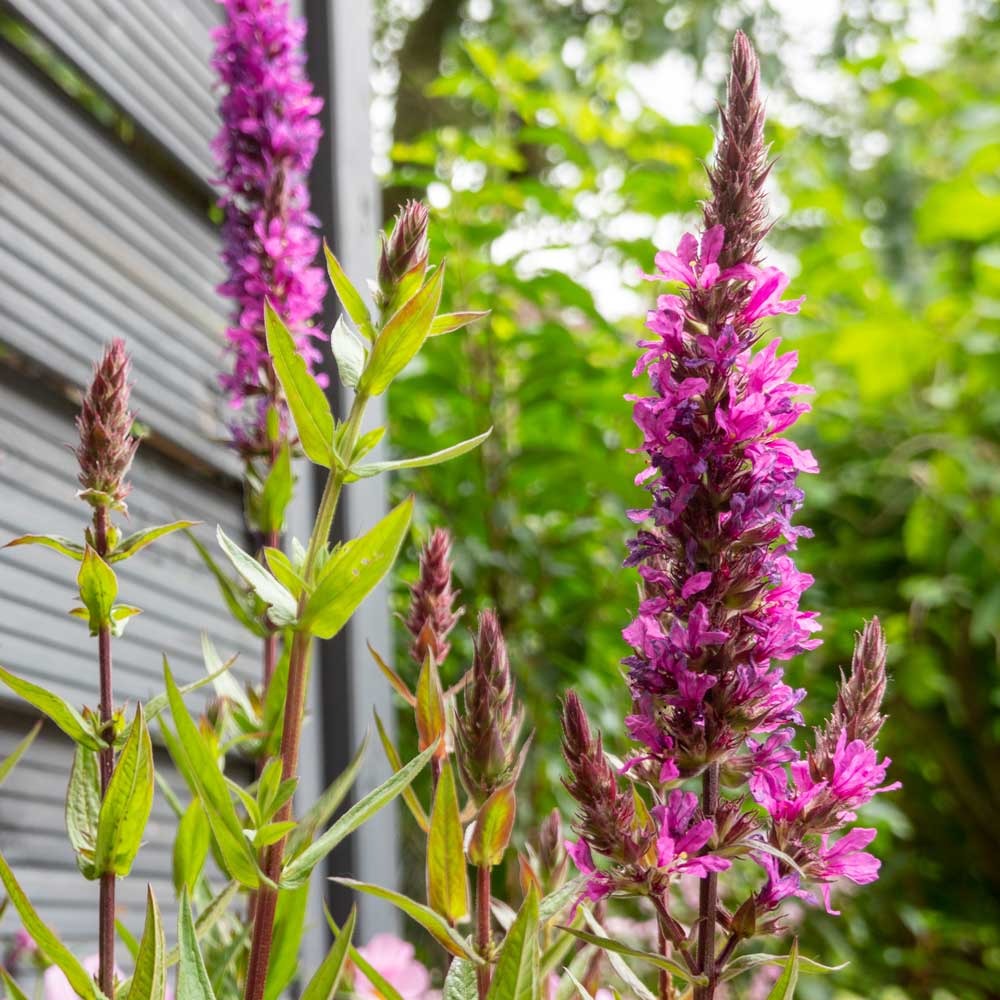
Purple loosestrife (Lythrum salicaria). Deepblue4you / iStock / Getty Images Plus
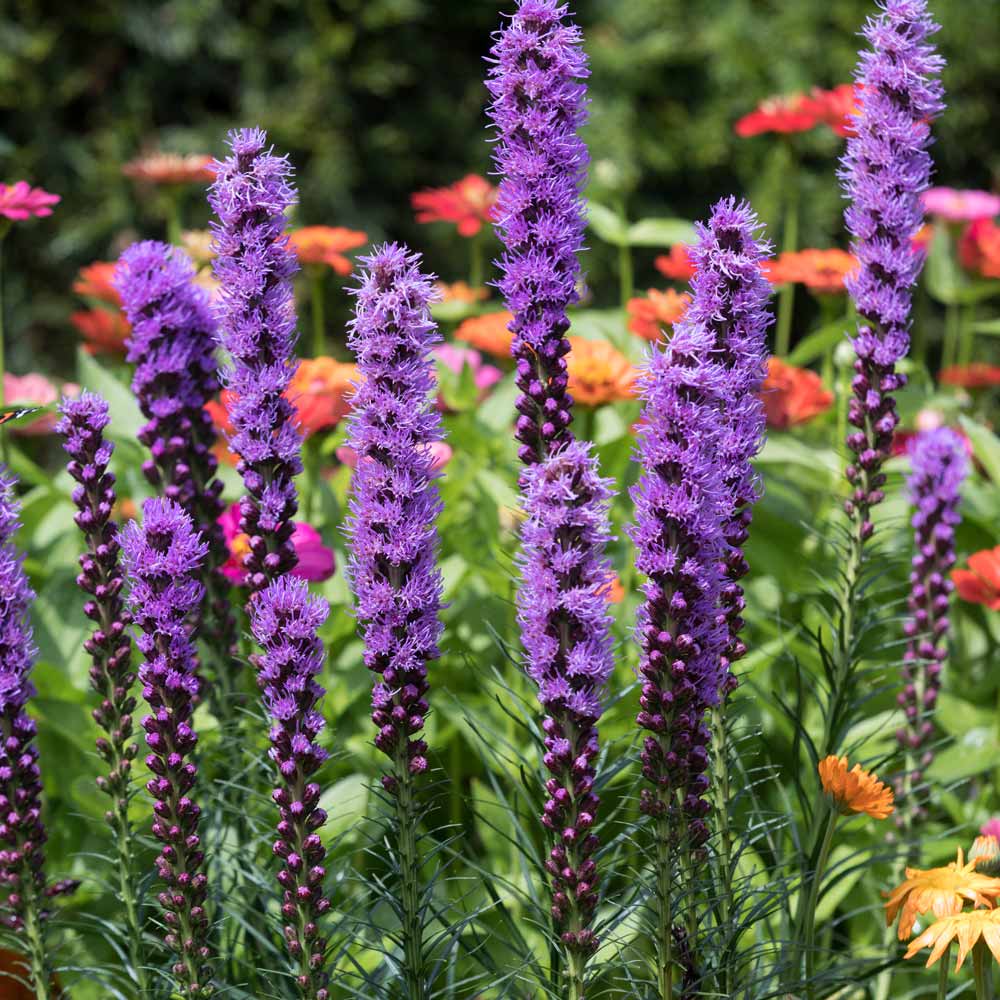
Blazing star (Liatris species). Wjarek / iStock / Getty Images Plus
Purple loosestrife (Lythrum salicaria) vs. blazing star (Liatris species). Once sold in garden centers, purple loosestrife is now banned in many Northeast and Midwest states for its invasive seeding.
Three key differences set purple loosestrife apart from native blazing stars, which have similar magenta-colored flower spikes:
Purple loosestrife also is taller (sometimes six feet and up) and its flower spikes are more slender than the fuzzier-looking blazing-star blooms.
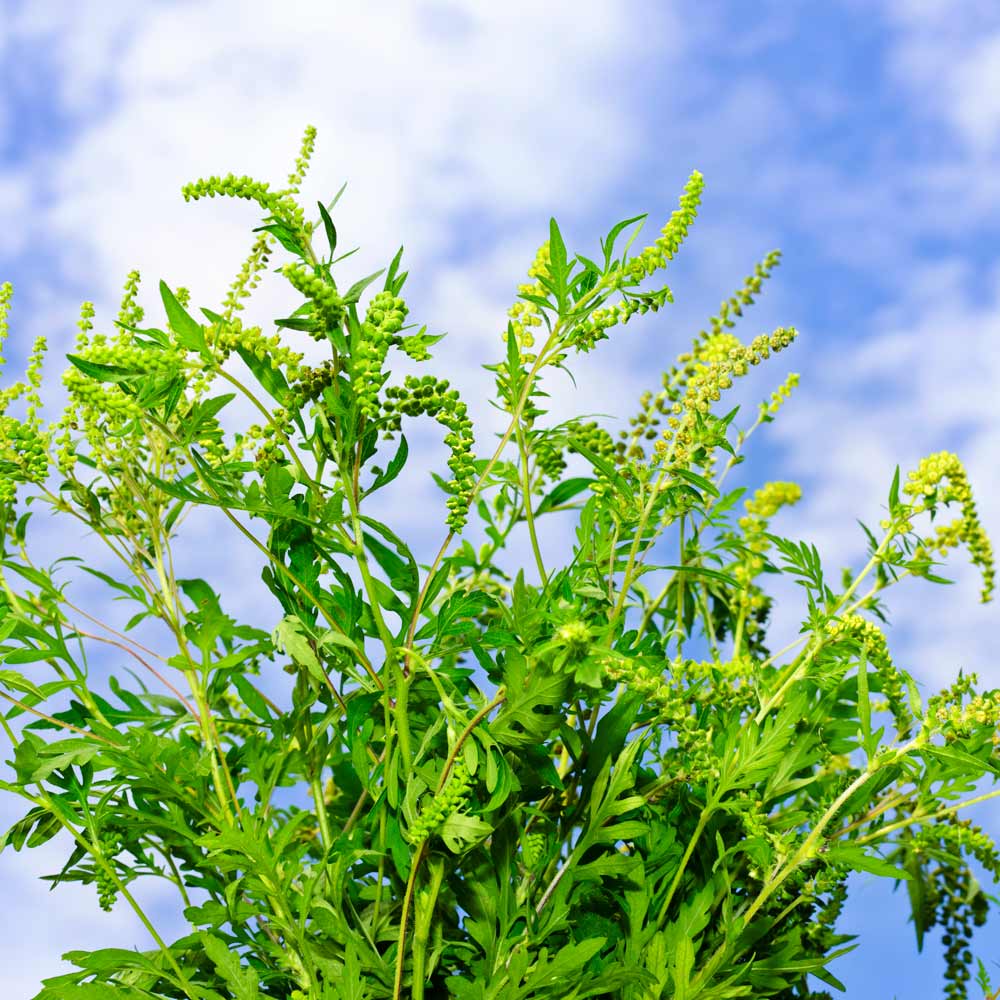
Ragweed (Ambrosia artemisiifolia). Elenathewise / iStock / Getty Images Plus

Goldenrod (Solidago). Solidago / E+ / Getty Images Plus
Ragweed (Ambrosia artemisiifolia) vs. goldenrod (Solidago). These two are often confused because they’re both members of the aster family and bloom at the same time (mid to late summer) in similar settings (open fields and sunny roadsides).
The biggest difference is in the flowers. Ragweed produces inconspicuous spikes of greenish-yellow flowers that look more like spikes of unopened buds, while goldenrod’s spikes are wider and bright gold in color.
The leaves also are different... ragweed has fern-like leaves while goldenrod’s leaves are slender and more grass-like.
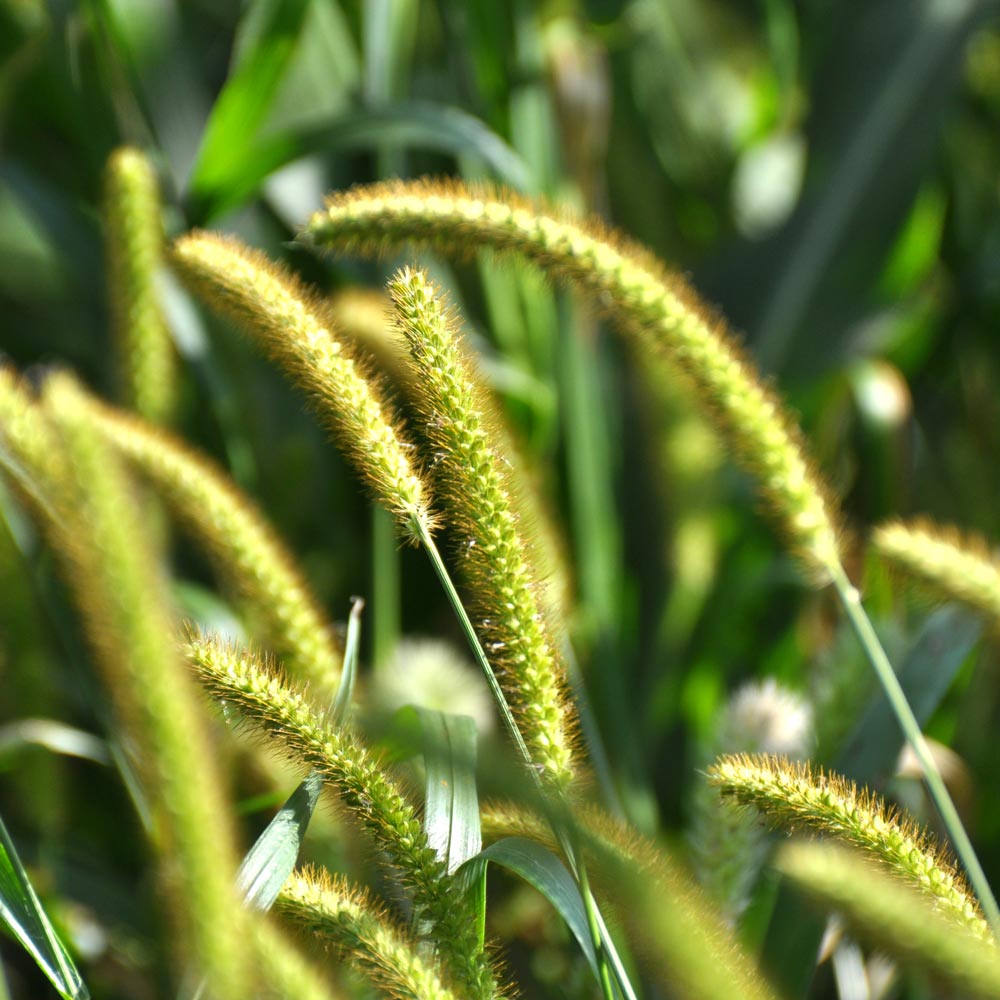
Yellow foxtail (Setaria pumila). Orest Lyzhechka / iStock / Getty Images Plus
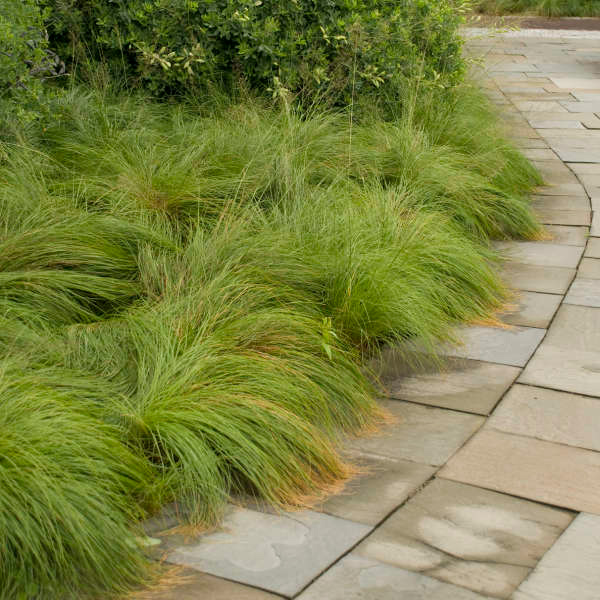
Prairie dropseed (Sporobolus heterolepis)
Yellow foxtail (Setaria pumila) vs. prairie dropseed (Sporobolus heterolepis). Yellow foxtail (a summer annual) is one of the most common weed grasses because it’s such a prolific seeder and not picky about soil conditions. It can be confused with several native grasses such as little bluestem, sideoats grama, and switchgrass, but it’s a particular look-alike for prairie dropseed because both are short grasses, topping out in the two- to third-foot-tall range.
The key separator is in the flowering stalks... yellow foxtail produces yellowish, bristly spikes that resemble arching foxtails, while prairie dropseed (a perennial) produces more slender seedheads that are pinkish in color.
Prairie dropseed also has finer-textured blades than yellow foxtail, which has the additional defining trait of reddish tinting at the base of its stems.
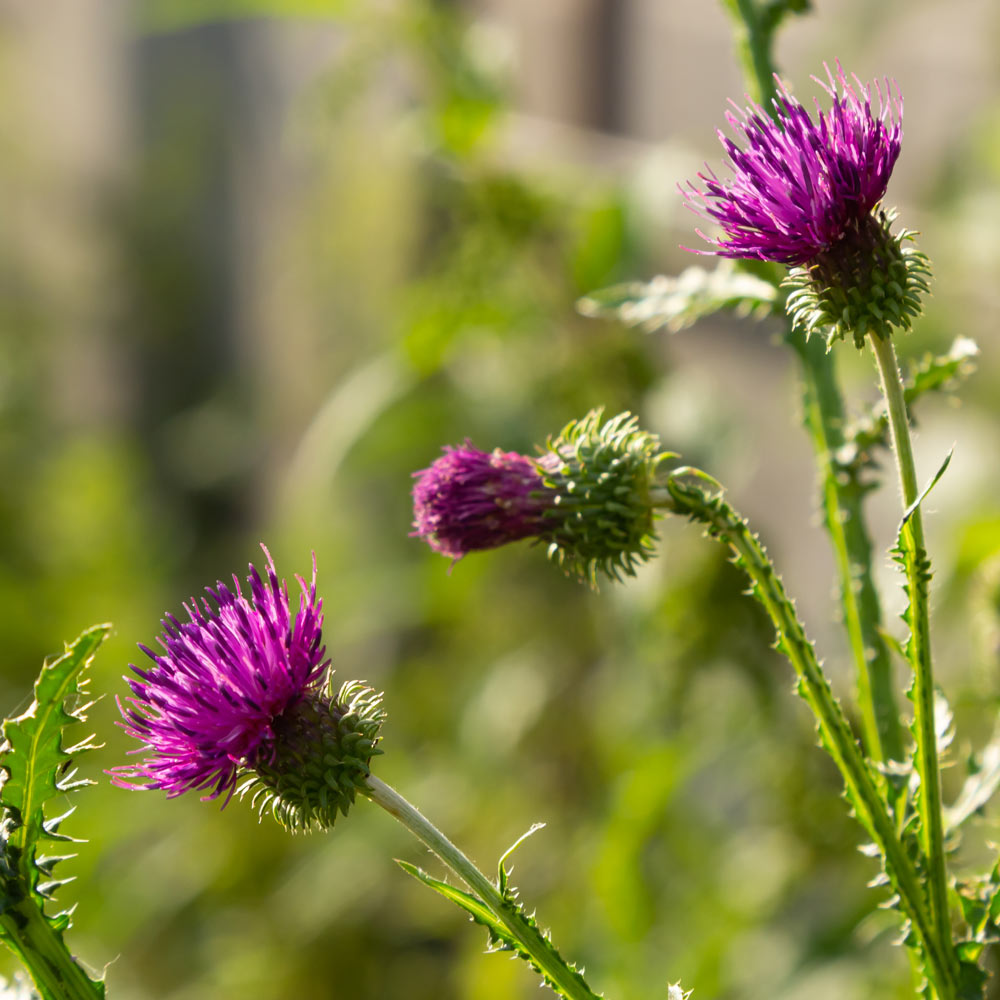
Canada thistle (Cirsium arvense). Oleg Marchak / iStock / Getty Images Plus
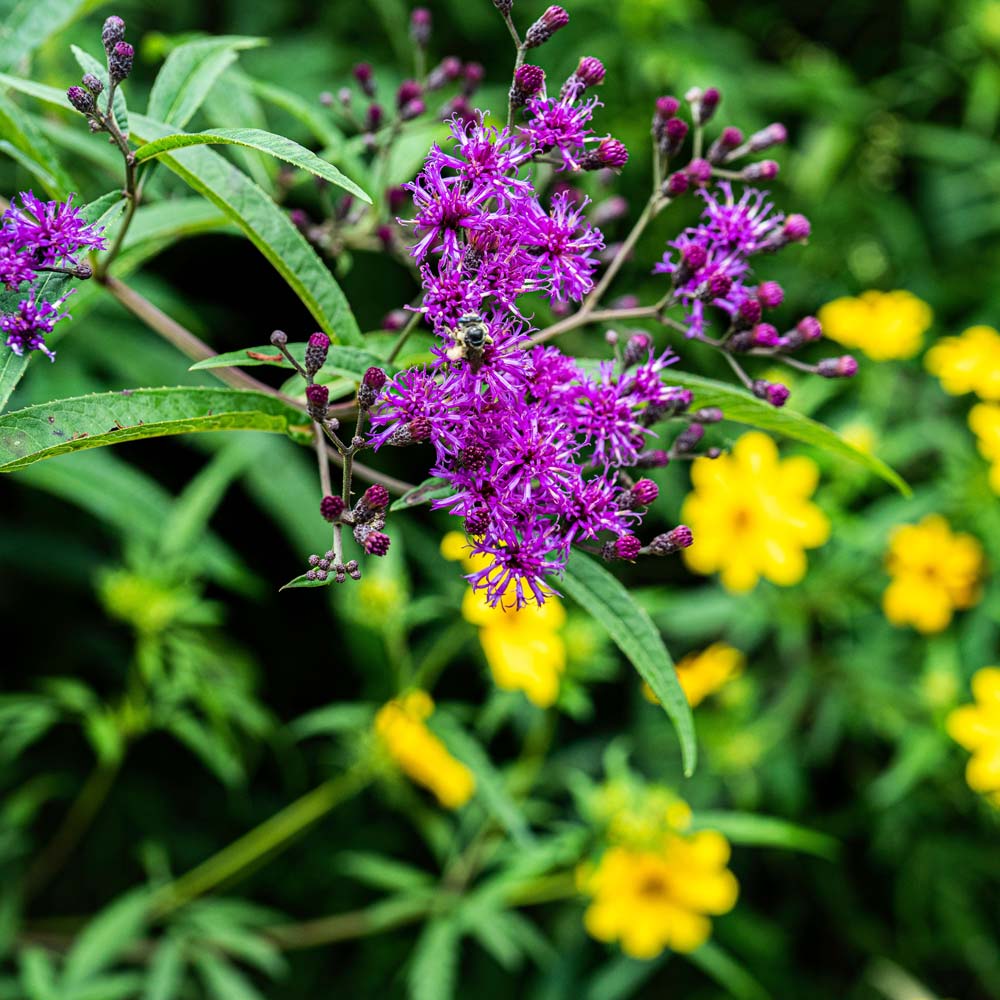
New York ironweed (Vernonia noveboracensis). Wirestock / iStock / Getty Images Plus
Musk thistle (Carduus nutans) and Canada thistle (Cirsium arvense) vs. New York ironweed (Vernonia noveboracensis). Several weedy, non-native thistles can be confused with the freely seeding native wildflower New York ironweed because both plants are tall (four to six feet) and produce rounded, pinkish-purple, late-summer flowers at the top of the stalks. Musk thistle and Canada thistle are two of the most common look-alikes.
The main separator here is that thistles have prickly, spiny leaves while New York ironweed leaves – while narrow and pointed – are soft and not spiny.
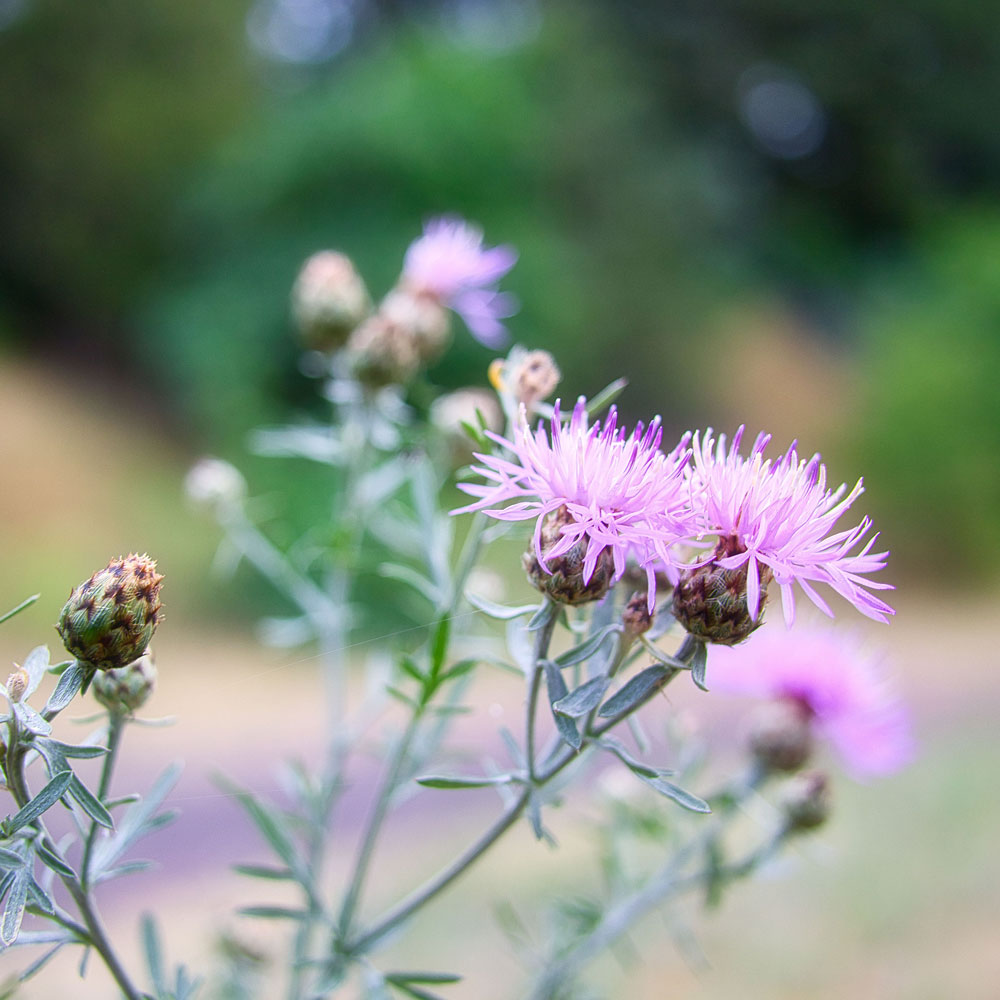
Invasive spotted knapweed (Centaurea maculosa). Wirestock/ iStock / Getty Images Plus
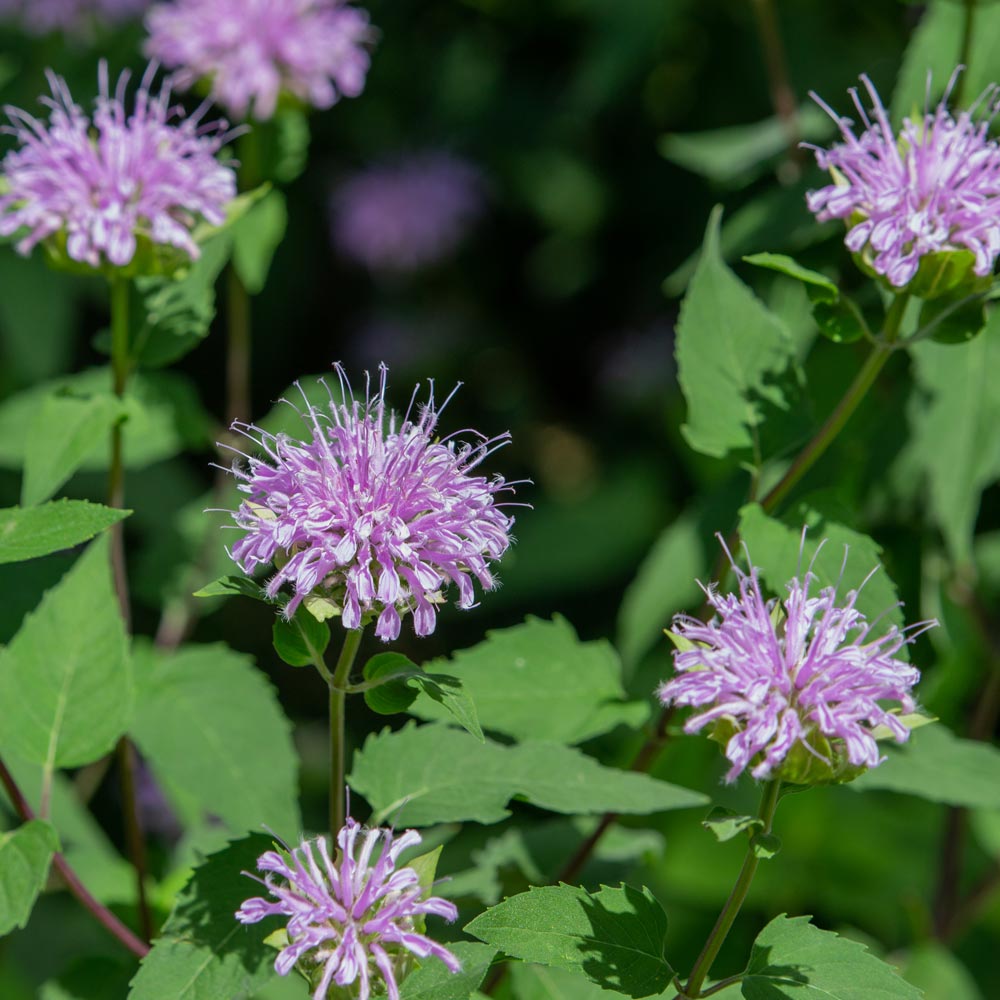
Native wild bergamot (Monarda fistulosa) is a favorite of many pollinators. Cynthia Shirk / iStock / Getty Images Plus
Spotted knapweed (Centaurea maculosa) vs. wild bergamot (Monarda fistulosa). Both of these grow two to three feet tall and produce rays of pinkish-purple flowers in summer.
However, spotted knapweed (a thistle relative) is distinctive for the mini-pineapple-like bud that the flowers sit on, while wild bergamot or bee balm (a mint-family native) is distinctive for its square stems.
Knapweed’s leaves also alternate up the stems, while wild bergamot’s leaves are opposite one another.
Spotted knapweed is an introduced, invasive biennial or perennial weed. It can infest open and disturbed sites by out-competing native plant species to form large colonies.
Read about spring wildflowers that are often confused with spring weeds.